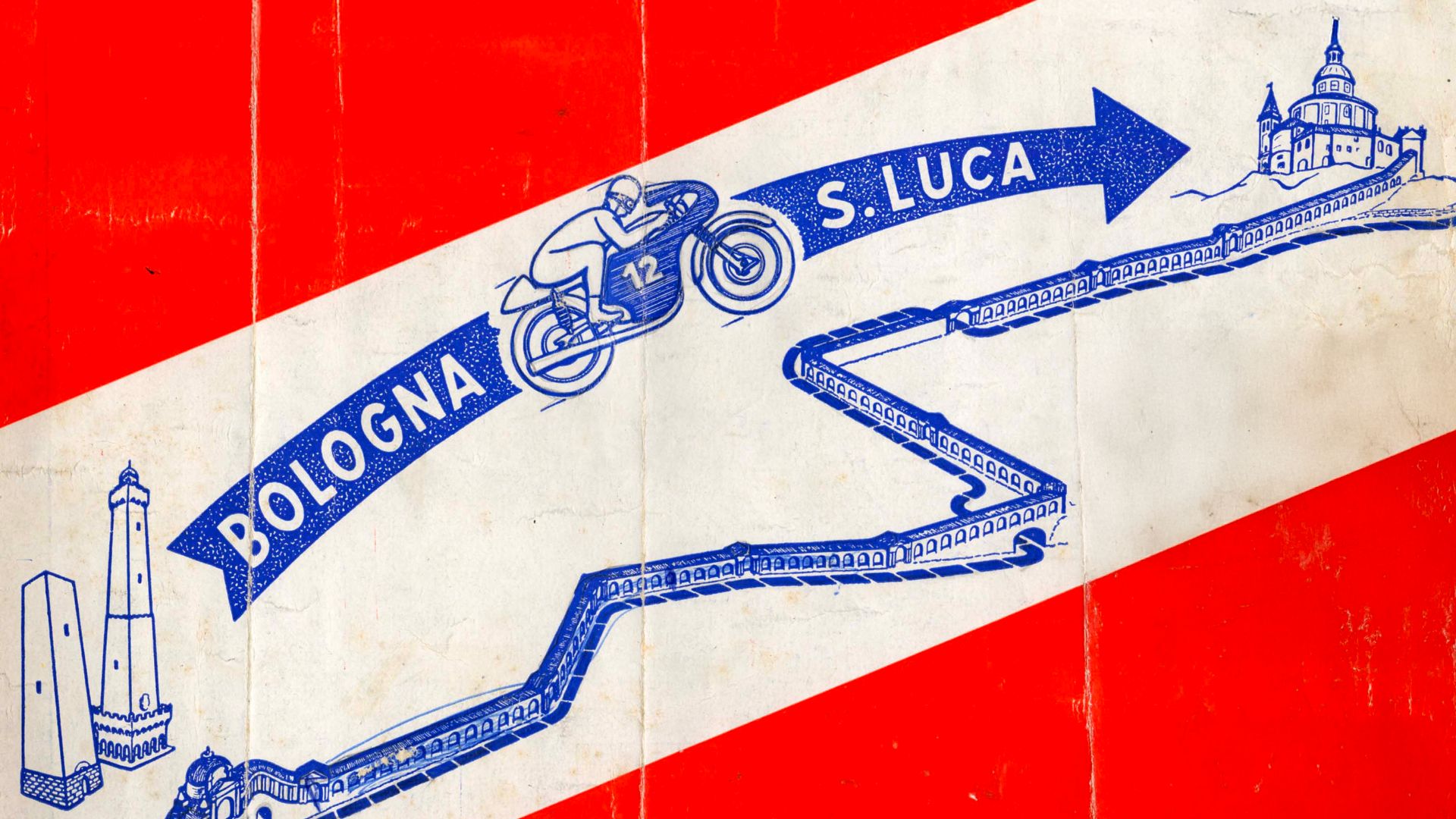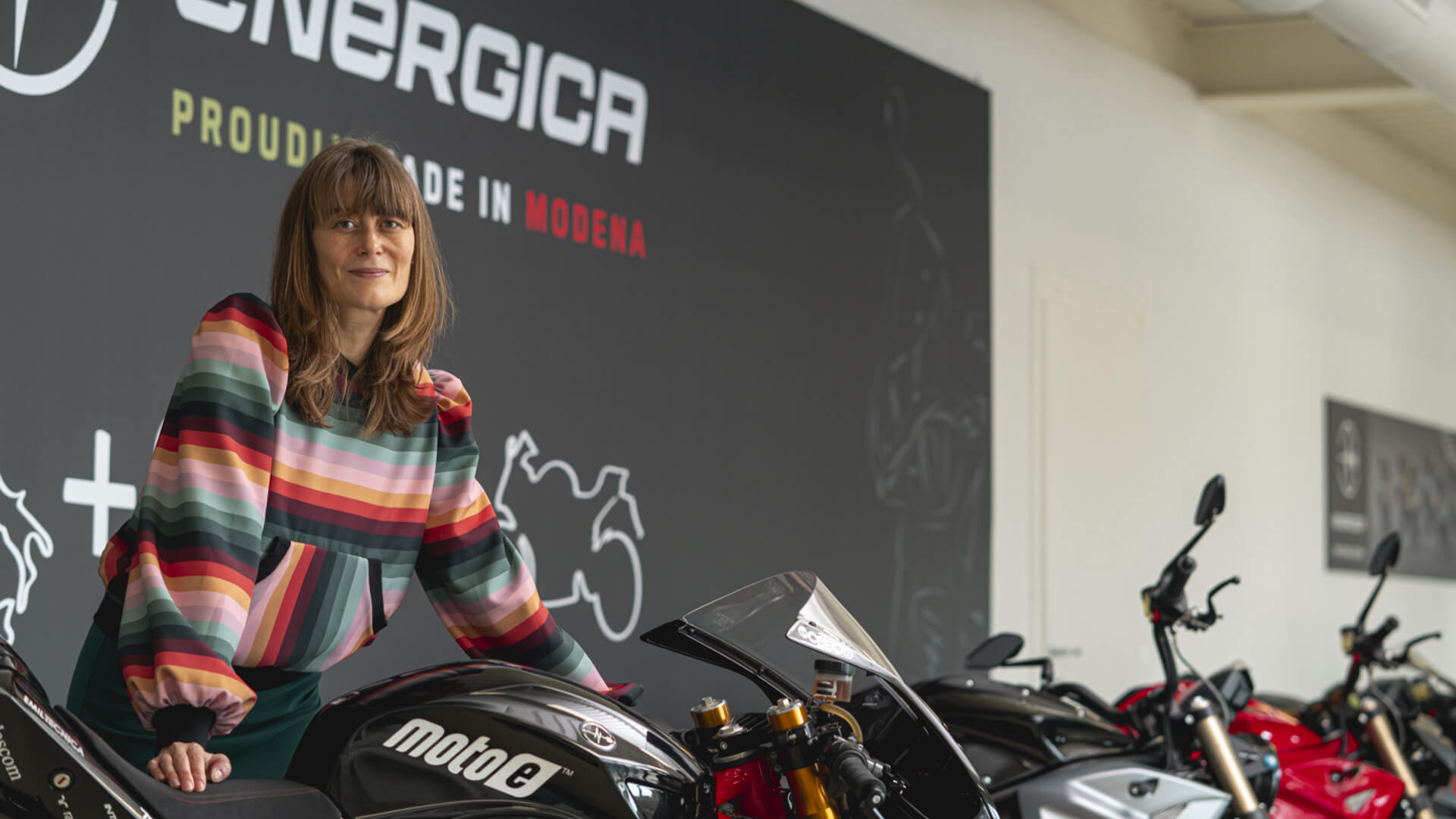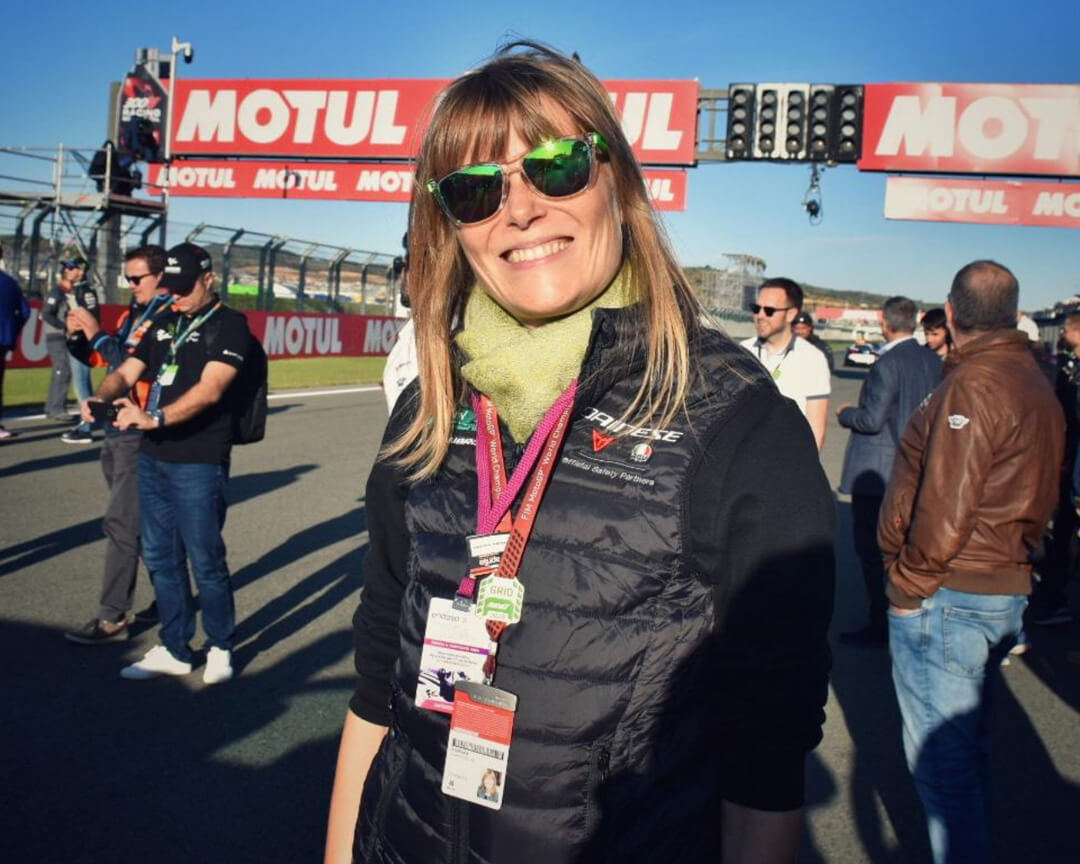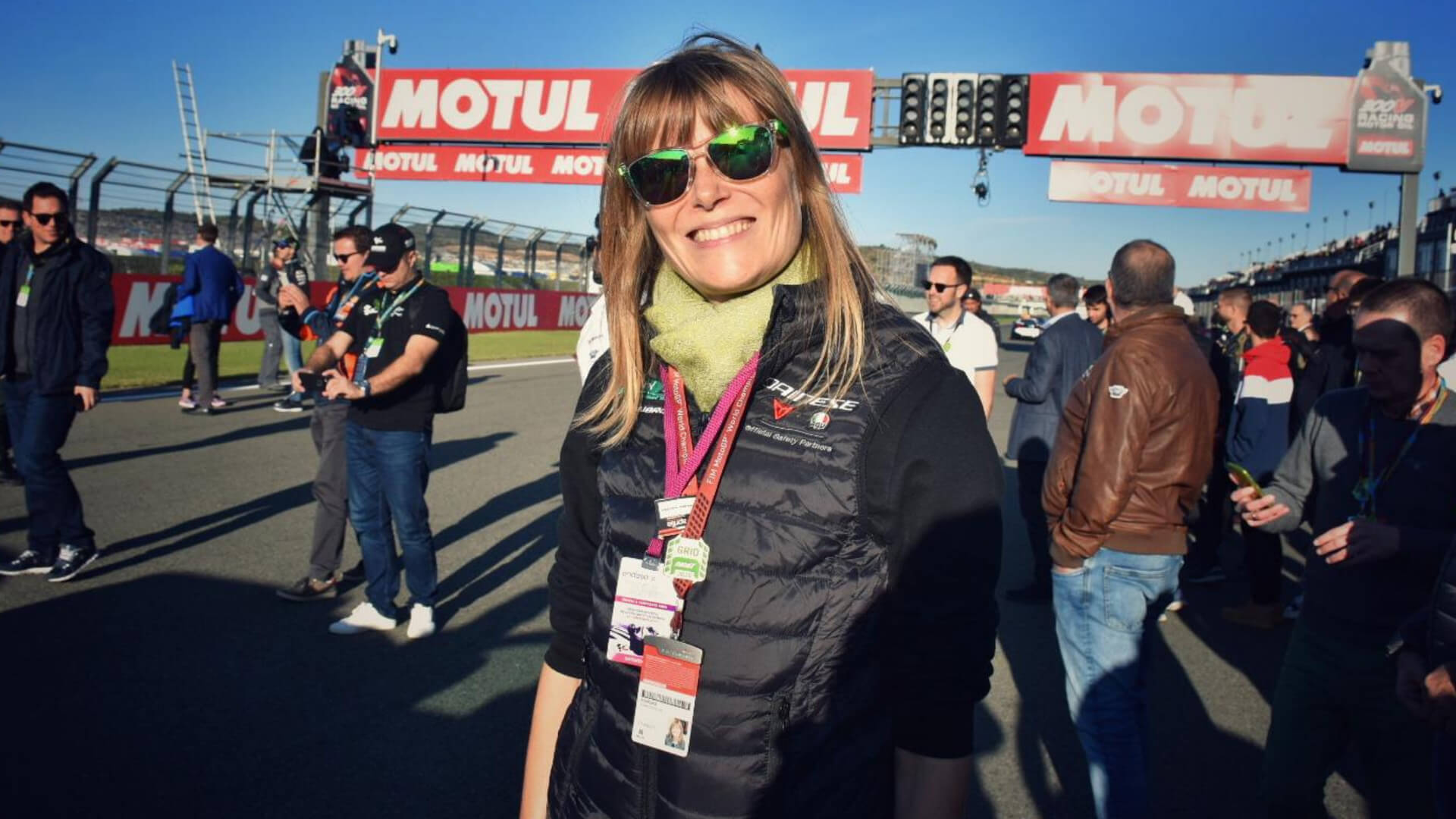


Livia Cevolini, CEO of Energica Motor Company, is a pioneering figure on the electric supersport motorcycle scene.
Born as an extension of the prestigious CRP Group, Energica has carved out a leading role in this competitive market, driven by innovation and an astounding ability to stay ahead of the game. In an exclusive interview with Motor Valley, Livia Cevolini tells us her story — and Energica’s — from the challenges she has faced and overcome to her vision for the future of electric mobility.
Energica was born out of CRP Group in Modena, but where exactly did the desire to enter the electric supersport motorcycle sector come from?
Energica took its first steps into the motorcycle world with CRP Racing, entering global competitions with endothermic bikes. We took part in the world championship and other national competitions: our aim was basically to create a test platform for our technologies.
During the 2008 crisis, we decided to fight back against the gridlock and invest in a completely new sector: electric mobility. And that’s how eCRP was born. An electric racing bike that we competed with for two years before eventually launching the Energica project: a high-performance electric road bike. We were headstrong on starting out with a top-of-the-range vehicle from the get-go, as we needed to demonstrate just how well an electric bike could perform. We needed to push things to the extreme, to show we could produce something really high-end.
And that was the start of Energica’s journey: a journey that over the course of more than 10 years has propelled us to industry leader. We now have four models on the market and a new business unit, Energica Inside, dedicated to supporting companies in their own electric transition.
So you could say that Energica literally built its own market from nothing?
Yes, you could certainly say that Energica has built not just its own market, but an entire sector. From the initial idea to the designing, construction, promotion and sale of the vehicles: we’ve created a complete ecosystem.
From a technical point of view, we started out with a blank sheet, building a sort of “technical language” that didn’t yet exist. Our engineers have developed unique expertise in this area, making us pioneers and founders of a now internationally renowned “Electric Valley”. From a business point of view, we’ve created a new market, anticipating the demands of a target audience that before did not exist. Being pioneers meant we could start from nothing, without any structures or preconceptions, focusing purely on innovation.
This obviously comes with risks, which for many companies might have been an obstacle, but for us always represented a challenge we were determined to overcome.
The average employee age at Energica is around 30. Why is investing in young people important to you?
The average age at our company is 28, so really young, and focusing on this demographic is crucial for me. The working world has changed and is continuing to change.
Over the years at Energica, we’ve always tried to keep with the times, even from a human resources perspective. I’m really proud of the new young talent we’ve attracted, and of the fact that we’ve retained the talent that believed in the project from the very beginning. This intersection between new and senior creates a unique dialogue for growth: young people bring fresh ideas and a more open-minded vision, while senior figures pass on their crucial experience, teaching our younger employees the basics they need to flourish.
Energica was the sole supplier of MotoE, playing a key role in the new competition. How did you end up at the World Championship?
The opportunity presented itself when Dorna Sports and FIM began looking for a sole supplier for a brand-new Cup. This was an intriguing, yet also complex challenge for us. I was on-board straight away and had to convince my originally sceptical team, but I was sure that together we could create something unique, and we did.
Dorna is number-one in this sector, and they needed to be sure they were choosing the number-one manufacturer, with the very best project. So we were up against some big names, and winning the deal was by no means a given. But the hardest part was still to come. The deadlines were extremely tight, but through team work we managed to deliver a competitive package, thanks to our experience both in road and racing. We had just a few months to work on it, with no other manufacturers to base anything on. It was really tough, but it taught us so much and showed us what we’re really capable of.
What impact do you think the MotoE has had on the public’s perception of electric motorcycled?
It’s definitely had a positive impact. The MotoE has boosted our reputation enormously, which has enabled us to launch our bikes in lots of new markets we hadn’t yet reached.
The public’s perception has changed: the World Cup has actually dispelled further doubts surrounding electric motorbikes, both in terms of the product itself and safety. But looking at it another way, it hasn’t enabled us to grow in terms of innovation: we needed more competition. That’s why we decided not to renew the agreement.
In the future, we’d like for the championship to be opened up to more manufacturers: the dream is to have an all-electric MotoGP, so that we can raise the bar for everyone and see a real boost in technology and innovation.
How do you see the future of electric motorcycles and what role does Energica intend to play in it?
Electric motorcycles are the present, and I hope that Energica continues to grow to be able to meet customer demand, which is really substantial, just like it is across the entire electric automotive sector. Electric is the only solution for sustainable mobility, and Energica will continue to provide its audience with safe, avant-garde vehicles.
Who is Livia Cevolini outside of Energica?
I spend most of my free time with my friends and family. My biggest passions, aside from engines, are sport, particularly kite-surfing and snowboarding. And I love everything to do with art too, from painting to music.
How did your journey with Energica start?
I was Head of Marketing and Sales at CRP Group, but as soon as the Energica project was born, I took on the role of Team Leader. I truly believed in it right from the beginning, because it encapsulated both my passion for engines and sustainability. I strongly believe in having a conscious approach when it comes to the environment, so that we can leave future generations with a better world, and one that’s also full of high-performance vehicles.
When the Energica company was officially created in 2014, I took on my current role of CEO.
At the inaugural Motor Valley Fest conference, you said: “I hope that soon there will be other women up here with me on this stage.” Do you think that men and women have the same career opportunities in the automotive sector?
Currently, opportunities are not equal, no. Although there’s a theoretical “idea” of equality, in practice it hasn’t yet been fully realised.
At our company, I’ve always believed in the importance of skill, independently of gender. Nevertheless, over the last few years we’ve found the disparity between our business needs and the educational training available at schools and universities challenging. This gap is particularly evident in STEM disciplines, despite our efforts to involve more young people.
So to attract new talent, more efforts are needed in promoting and properly communicating what study paths are actually available, which should not be restricted by preconceptions and social frameworks.
For those who are already in the working world, it’s crucial that companies continue to monitor things and that there is a focus on performance and achievement based on merit, not gender.
Policies need to ensure more services and incentives to ensure real equality and provide the same opportunities for growth and career progression for everyone.
What has the most rewarding moment of your career been up until this point, and why?
Every day I go to work. The building, the offices, my team: every day I see the result of more than 10 years of history, success and sacrifice. Seeing what we’ve built together with my own eyes every single day is without a doubt the most rewarding part of my job.
Looking to the future, what are your goals and dreams?
I’ve got lots of dreams, or rather lots of challenges written on blank sheets of paper that will soon be transformed into new projects.


Energica is located in the heart of the Motor Valley. What significance does this geographical and cultural context have for a company like Energica?
The Motor Valley has been an incredibly fertile ground for our journey for two reasons: the deep passion for engines instilled there, and its wealth of exceptional know-how and talent.
With determination, we have written a new chapter, entitled the Electric Valley, generating new talent and bringing added value to this globally renowned region. This is the “place to be” if you want to make a real difference, and not everyone gets that. The waves are there to be surfed, even if we’re afraid, because getting caught underneath them is worse. And we’ll still be surfing them, despite everything. Let’s hope so anyway!
Partner involved:
Area involved: